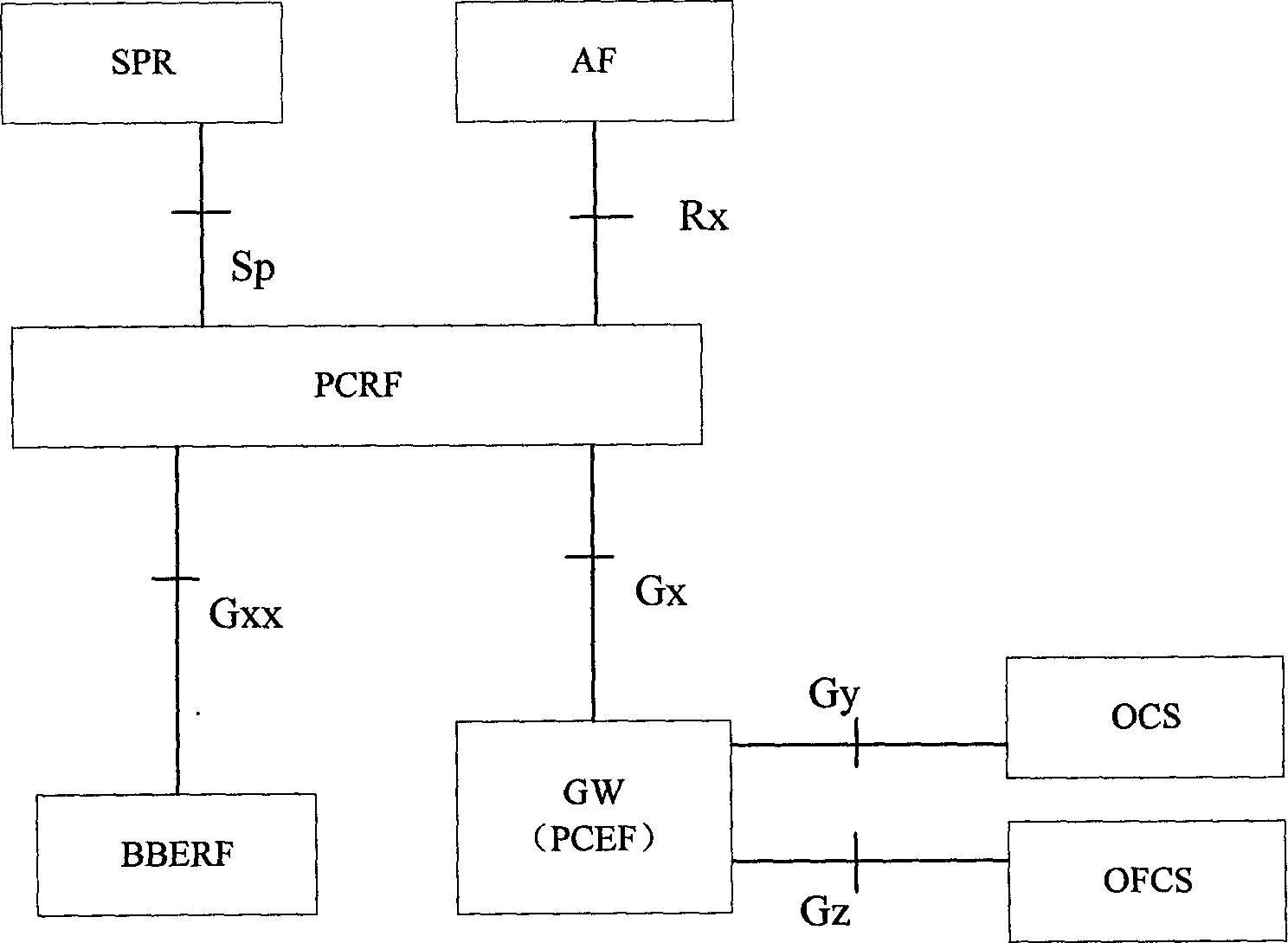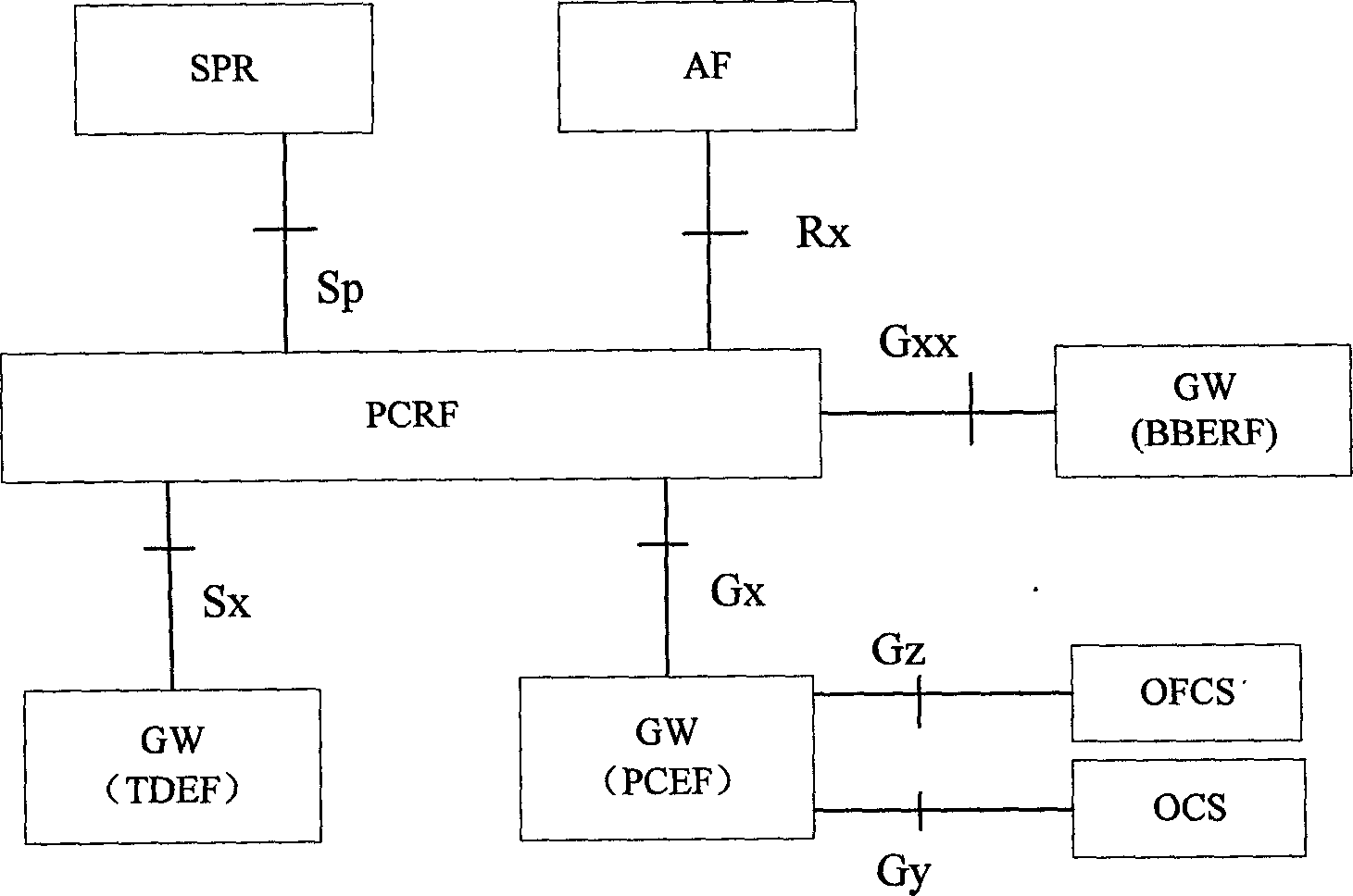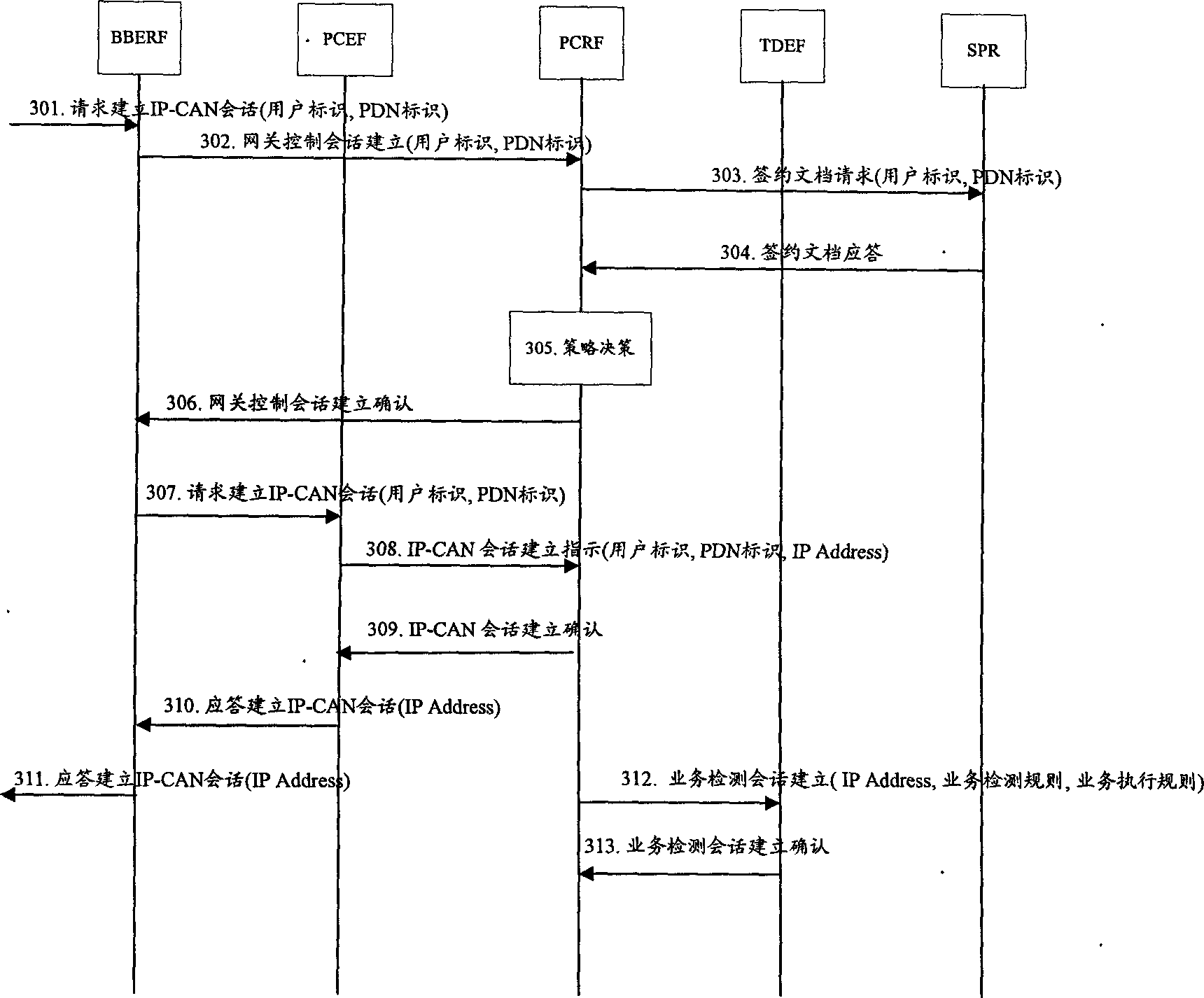Enhanced policy and charge control method and system and PCC (Policy Charge Control) system
A charging control and policy technology, applied in transmission systems, digital transmission systems, accounting/billing services, etc., can solve problems such as limiting the advantages of PCC systems, and achieve the effect of enriching business information
- Summary
- Abstract
- Description
- Claims
- Application Information
AI Technical Summary
Problems solved by technology
Method used
Image
Examples
Embodiment 1
[0069] image 3 It is a flow chart of Embodiment 1 of the enhanced policy and charging control method of the present invention, as shown in image 3 As shown, this embodiment describes the IP-CAN session establishment process, and the specific steps are as follows:
[0070] In step S301, the gateway where the BBERF resides receives an IP-CAN session establishment request message, which carries information such as user ID and PDN ID.
[0071] In step S302, the BBERF sends a gateway control session establishment request message to the PCRF, and the message carries user identification, PDN identification, and the like. This message is used to request the establishment of a gateway control session.
[0072] Step S303, if the PCRF has no subscription information related to the user, the PCRF sends a subscription document request message to the SPR, and the message carries the user ID and PDN ID, etc. If there is user-related subscription information stored in the PCRF, step S305...
Embodiment 2
[0086] Figure 4 It is a flow chart of Embodiment 2 of the enhanced policy and billing control method of the present invention, as shown in Figure 4 As shown, this embodiment describes the termination process of the IP-CAN session initiated by the UE after the IP-CAN session is established based on the first embodiment. In this process, the gateway where the BBERF resides and the gateway where the PCEF resides uses PMIPv6 protocol to communicate. Specific steps are as follows:
[0087] In step S401, the gateway where the BBERF resides receives an IP-CAN session request message. The message carries the identifier of the IP-CAN session, such as the IP address of the IP-CAN session.
[0088] In step S402, the BBERF sends a gateway control session termination request message to the PCRF, and the PCRF identifies the relevant IP-CAN session and deletes the corresponding QoS rule.
[0089] In step S403, the PCRF returns a gateway control session termination confirmation message ...
Embodiment 3
[0105] Figure 5 It is a flow chart of Embodiment 3 of the enhanced policy and billing control method of the present invention, as shown in Figure 5 As shown, this embodiment describes the IP-CAN session modification process initiated by the AF. In this process, the gateway where the BBERF resides and the gateway where the PCEF resides communicate using the PMIPv6 protocol. Specific steps are as follows:
[0106] Step S501, AF sends application / service information to PCRF.
[0107] In step S502, the PCRF returns a confirmation message after saving the application / service information.
[0108] In step S503, the PCRF makes policy decisions according to subscription information, access information, service information and network policies. PCRF policies include PCC rules and corresponding QoS rules. If the issued PCC rules need to further implement policies and charging controls above four layers, the PCRF will also customize corresponding business execution rules. Service ...
PUM
 Login to View More
Login to View More Abstract
Description
Claims
Application Information
 Login to View More
Login to View More - R&D Engineer
- R&D Manager
- IP Professional
- Industry Leading Data Capabilities
- Powerful AI technology
- Patent DNA Extraction
Browse by: Latest US Patents, China's latest patents, Technical Efficacy Thesaurus, Application Domain, Technology Topic, Popular Technical Reports.
© 2024 PatSnap. All rights reserved.Legal|Privacy policy|Modern Slavery Act Transparency Statement|Sitemap|About US| Contact US: help@patsnap.com










